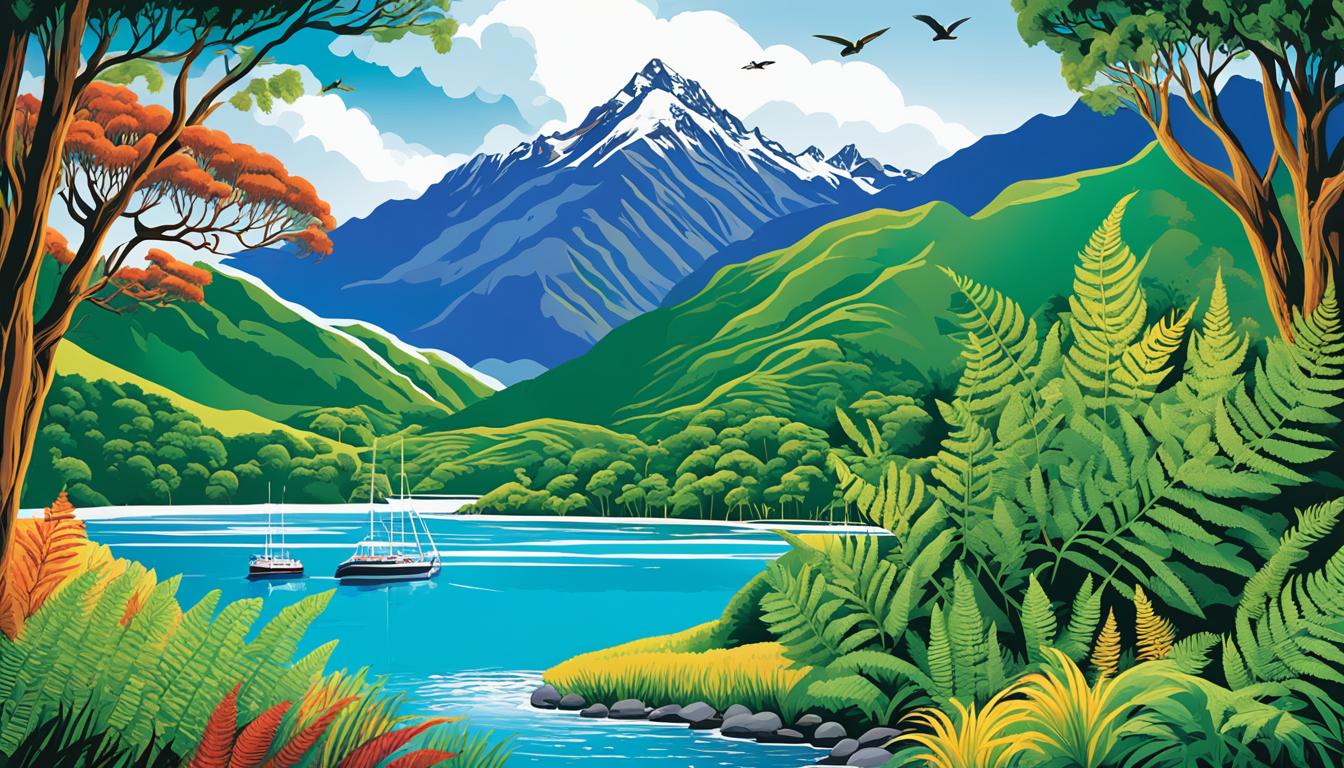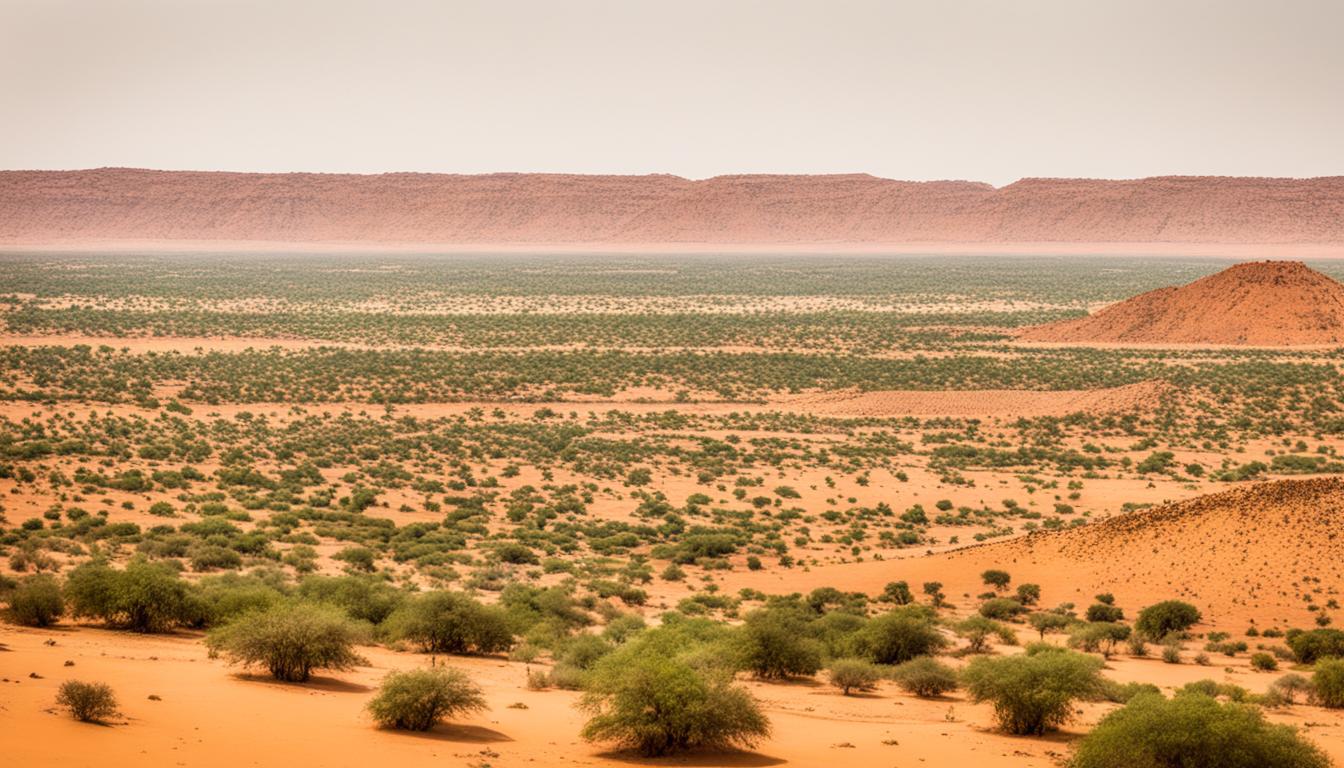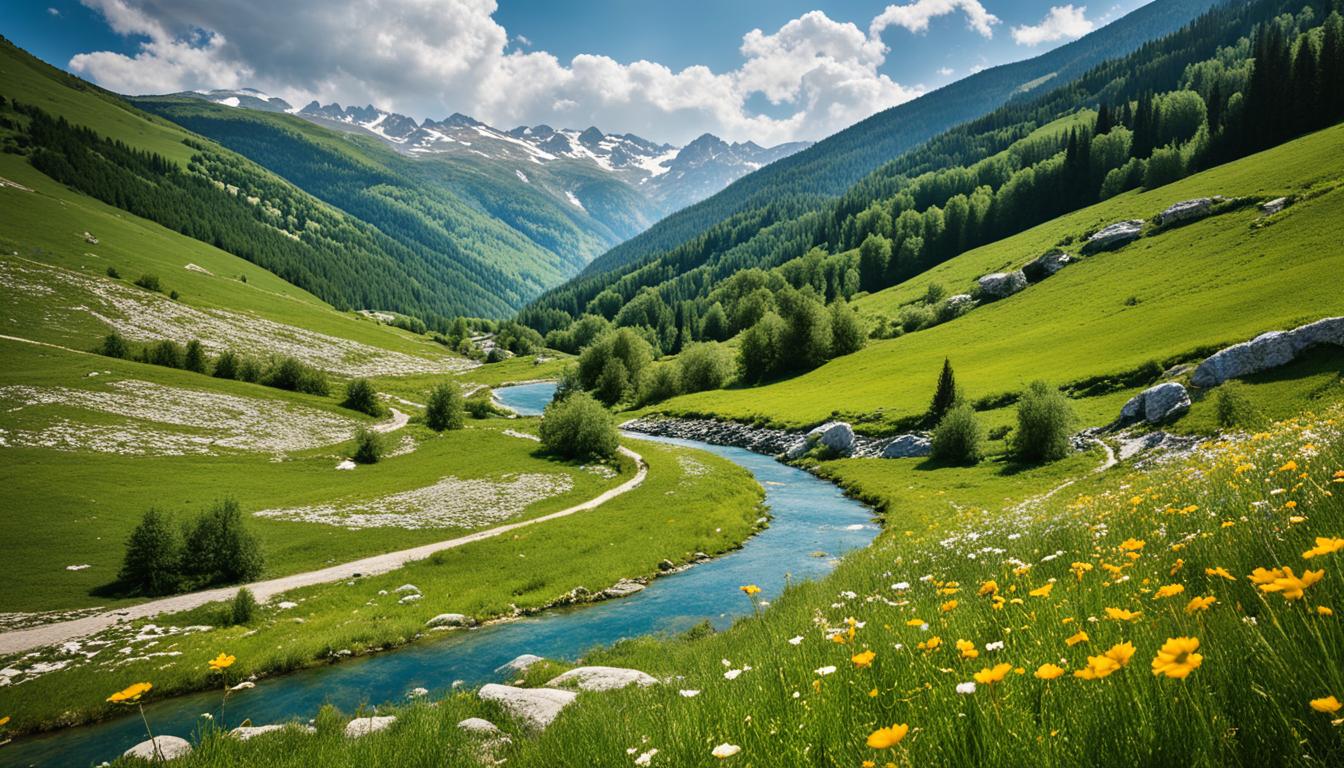Nicaragua Sacred Natural Sites and Biodiversity
Did you know that Nicaragua is home to a rich tapestry of sacred natural sites and extraordinary biodiversity? These natural wonders, which hold deep cultural and spiritual significance, are essential for the survival of the indigenous Mayangna people and the preservation of their cultural heritage. Let’s explore the interconnectedness between Nicaragua’s sacred environments and the efforts to protect its invaluable biodiversity.
Key Takeaways:
- Nicaragua is blessed with sacred natural sites that play a vital role in indigenous cultural heritage and survival.
- Protecting biodiversity in Nicaragua is crucial for maintaining the delicate balance of ecosystems and preserving endangered species.
- Engaging indigenous communities in conservation efforts is essential for the long-term protection of sacred natural sites and sustainable eco-tourism.
- Nicaragua’s commitment to environmental preservation sets the stage for a harmonious coexistence between humans and the natural world.
- By valuing and protecting sacred natural sites, Nicaragua ensures the continuation of cultural practices and spiritual connections to the land.
The Role of Sacred Natural Sites in Conservation
Sacred natural sites hold immense cultural and spiritual significance for indigenous communities in Nicaragua. They serve as vital repositories of traditional ecological knowledge and play a crucial role in biodiversity conservation. These sites, such as the Bosawás Biosphere Reserve, are considered cultural and spiritual commons, representing the deep connection between indigenous communities and the natural world.
Sacred natural sites contribute to the preservation of biocultural conservation networks, which aim to protect both the biological and cultural diversity of an area. They are not only crucial for safeguarding biodiversity but also for maintaining the cultural heritage and spiritual practices of indigenous communities.
“Sacred natural sites are the embodiment of the connection between nature and spirituality, providing a sense of identity and belonging to indigenous communities.” – Indigenous Elder, Nicaragua
These sacred sites serve as living classrooms where traditional ecological knowledge is passed down from generation to generation. Indigenous communities have a deep understanding of the local ecosystems, including the medicinal plants, sustainable resource management practices, and the intricate relationships between species. This traditional ecological knowledge is invaluable for conservation efforts, as it provides insights into sustainable ways of living in harmony with nature.
The preservation of sacred natural sites is a collaborative effort involving indigenous communities, conservation organizations, and government agencies. By recognizing and respecting the cultural and spiritual significance of these sites, conservation initiatives can gain local support and participation, promoting the long-term protection of both natural and cultural heritage.
Indigenous Communities as Stewards of Conservation
Indigenous communities not only hold a deep connection to sacred natural sites but also have a profound sense of responsibility towards their protection. Their intimate knowledge of the land and the spiritual significance attached to these sites make them natural stewards of biodiversity conservation. By involving indigenous communities in the design and implementation of conservation strategies, a holistic approach can be adopted that integrates both traditional knowledge and scientific expertise.
Furthermore, the involvement of indigenous communities in conservation efforts promotes sustainable resource management practices and ensures the preservation of their cultural identities. By supporting indigenous-led initiatives, such as sustainable eco-tourism, these communities can generate income while responsibly managing their natural resources.
“The conservation of sacred natural sites is not only about protecting the environment but also about preserving the cultural heritage and spiritual practices of indigenous communities.” – Indigenous Leader, Nicaragua
In conclusion, the role of sacred natural sites in conservation cannot be overstated. They serve as cultural and spiritual beacons, connecting indigenous communities with the natural world and providing essential insights into sustainable living. The preservation of these sites is crucial for biodiversity conservation, cultural heritage, and the long-term well-being of indigenous communities. By recognizing and supporting the role of sacred natural sites, we can foster a deeper appreciation for the interdependency between nature and spirituality while ensuring a sustainable future for all.
The Importance of Indigenous and Traditional Peoples’ Involvement
Indigenous and traditional peoples play a vital role in conservation efforts in Nicaragua. With their deep knowledge of the natural environment and sustainable resource management practices, they serve as important stewards of biodiversity. One key aspect of their involvement lies in their close relationship with sacred natural sites, which hold immense cultural and spiritual significance.
“We have a profound understanding of the land and its resources. Our traditional ecological knowledge guides us in sustainable practices that have been passed down through generations.” – Indigenous community leader
Involving indigenous and traditional communities in conservation initiatives is crucial to ensure the long-term protection of these sacred natural sites. Their cultural identity is deeply intertwined with these sites, and their involvement helps preserve their unique customs and traditions.
Community-based conservation approaches provide an effective framework for involving indigenous and traditional peoples in conservation efforts. These approaches recognize and respect indigenous rights, allowing communities to contribute to decision-making processes and develop sustainable practices that align with their traditional ecological knowledge.
The Role of Traditional Ecological Knowledge
Traditional ecological knowledge encompasses the deep understanding of the natural environment held by indigenous and traditional peoples. This knowledge is gained through centuries of observation, experimentation, and intergenerational learning, and it offers valuable insights into sustainable resource management.
“Our traditional practices have helped us maintain the balance between humanity and nature for centuries. By integrating this knowledge into conservation efforts, we can create a harmonious relationship with the land.” – Traditional Elder
By incorporating traditional ecological knowledge into conservation strategies, we can benefit from the wisdom and insights accumulated over generations. This knowledge can help identify ecologically sensitive areas, understand the behavior of species, and develop sustainable strategies for resource use and protection.
Furthermore, indigenous and traditional communities have developed unique ways of managing resources sustainably, which can serve as valuable lessons for broader sustainable resource management practices across the globe.
The Power of Collaboration
Collaboration between indigenous and traditional communities, conservation organizations, government agencies, and other stakeholders is essential for the success of conservation efforts. By working together, we can leverage diverse perspectives, knowledge, and resources to develop comprehensive and effective strategies.
Collaborative conservation efforts promote mutual respect, inclusivity, and shared decision-making. They empower indigenous and traditional communities to take an active role in shaping conservation initiatives that align with their cultural values, while also benefiting the larger ecosystem.
Sustainable resource management practices developed through collaboration ensure that communities are not only preserving their cultural heritage but also creating a more sustainable future for themselves and the planet.
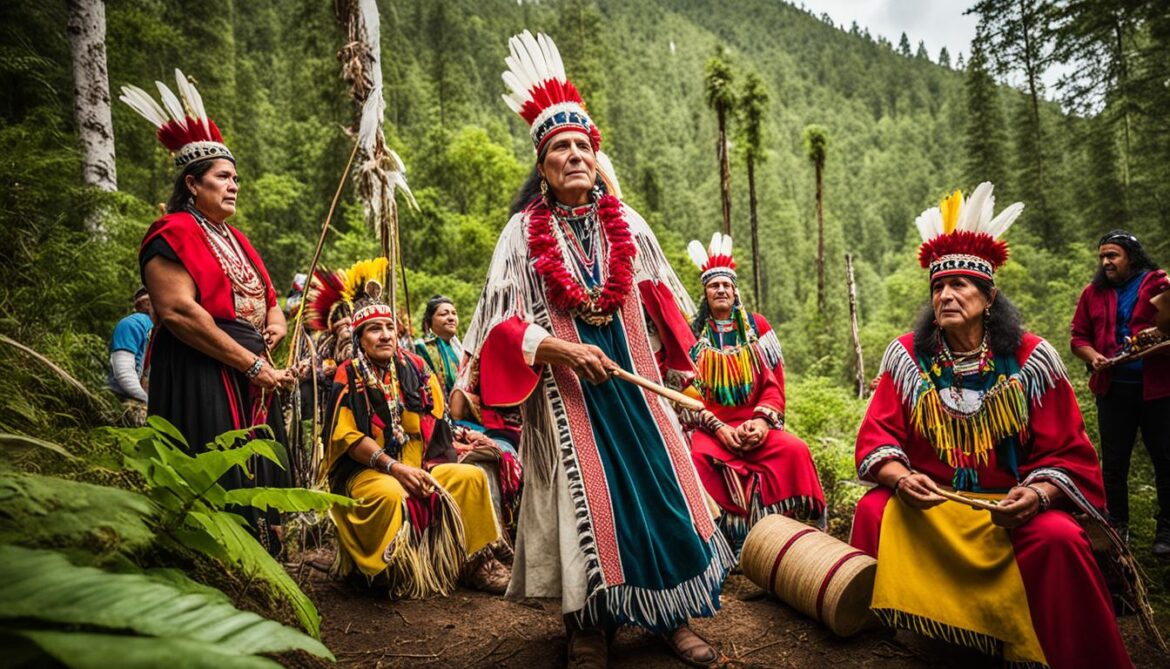
Embracing the importance of indigenous and traditional peoples’ involvement in conservation is crucial for the long-term protection of sacred natural sites and biodiversity. By recognizing and respecting their traditional ecological knowledge and promoting community-based conservation approaches, we can work together towards a more sustainable future that honors both cultural heritage and the preservation of our precious natural resources.
The Significance of the Ysyk-Köl Biosphere Reserve in Kyrgyzstan
The Ysyk-Köl Biosphere Reserve in Kyrgyzstan is an extraordinary natural treasure. Situated in the heart of the country, it serves as the largest protected area, encompassing diverse ecosystems and safeguarding numerous threatened species. With its pristine landscapes and rich biodiversity, the Ysyk-Köl Biosphere Reserve plays a pivotal role in biodiversity conservation.
One of the key highlights of the Ysyk-Köl Biosphere Reserve is its support for eco-tourism activities. Visitors can engage in a range of sustainable experiences, including hiking along picturesque trails, immersing themselves in the beauty of the surroundings. The reserve also offers exceptional opportunities for birdwatching and wildlife photography, providing a glimpse into the region’s captivating fauna.
However, the significance of the Ysyk-Köl Biosphere Reserve extends beyond its ecological value. It holds immense cultural importance, boasting over 130 sacred natural sites within its boundaries. These sites serve as a testament to the deep spiritual connection that local communities have with the land. Maintaining and preserving these sacred natural sites is vital for both the biological diversity and the cultural heritage of Kyrgyzstan.
The Ysyk-Köl Biosphere Reserve stands as a collaborative effort between the local communities and conservation organizations. The active engagement of these communities in the management and conservation of the reserve ensures the long-term protection of its unique ecosystems and cultural heritage. By empowering local communities to participate in conservation efforts, the reserve not only helps to sustain biodiversity but also supports the livelihoods of those who depend on its resources.
As an icon of biodiversity conservation and cultural significance, the Ysyk-Köl Biosphere Reserve sets an example for the world. It demonstrates the immense value of protected areas in preserving both nature and the intangible cultural heritage of a region. The efforts invested in the conservation of this reserve serve as a reminder of the importance of safeguarding our natural and cultural treasures for generations to come.
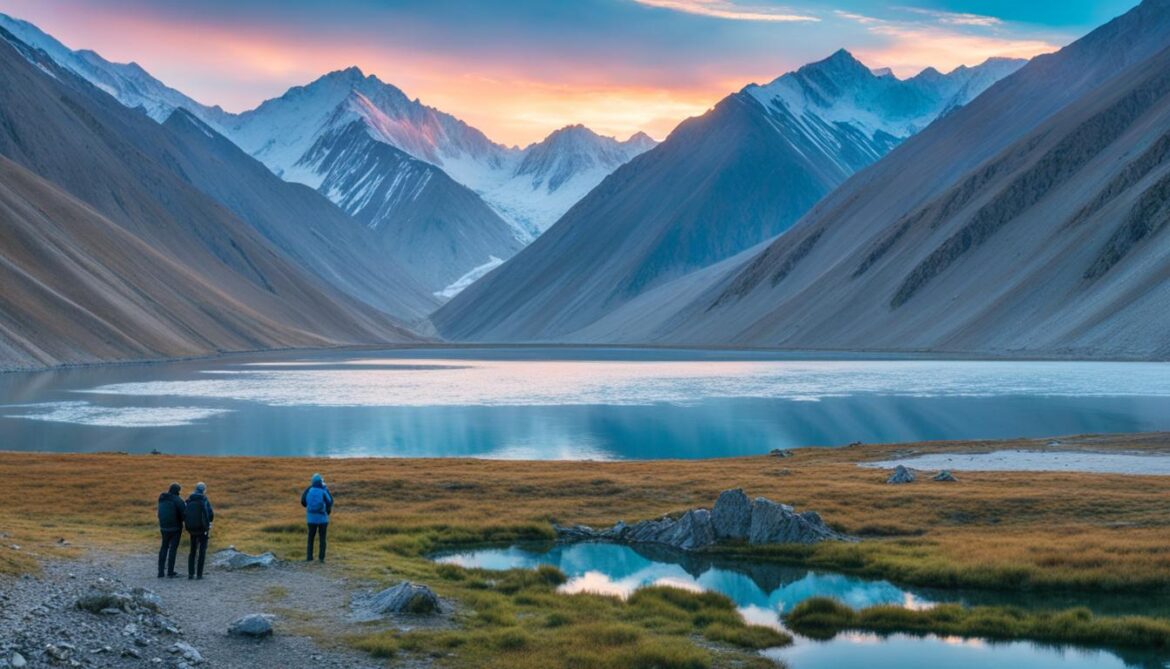
Ecosystems of the Ysyk-Köl Biosphere Reserve
The Ysyk-Köl Biosphere Reserve in Kyrgyzstan is renowned for its diverse range of ecosystems, which include alpine meadows, tundra, and riverine landscapes. These ecosystems support a remarkable amount of biodiversity, including several threatened species, making the reserve a crucial hub for conservation efforts.
The alpine meadows within the Ysyk-Köl Biosphere Reserve are a sight to behold, adorned with vibrant wildflowers that carpet the landscape. These meadows host a wide variety of plant and animal species, contributing to the overall richness of the reserve’s biodiversity.
The tundra, a subarctic landscape found in the Ysyk-Köl Biosphere Reserve, showcases nature’s incredible resilience. Adapted to harsh conditions, the tundra is home to unique flora and fauna that have evolved unique survival strategies in this challenging environment.
The riverine ecosystems present in the Ysyk-Köl Biosphere Reserve are essential for the surrounding flora and fauna. These ecosystems provide crucial resources such as water and nutrients, supporting the diverse array of species that call the reserve home. The interplay between the rivers and the surrounding ecosystem is crucial for maintaining the balance and health of the entire reserve.
The rich variety of ecosystems within the Ysyk-Köl Biosphere Reserve highlights the importance of protected areas in maintaining biodiversity. Each ecosystem contributes to the overall ecological balance, ensuring the preservation and conservation of the area’s diverse plant and animal life.
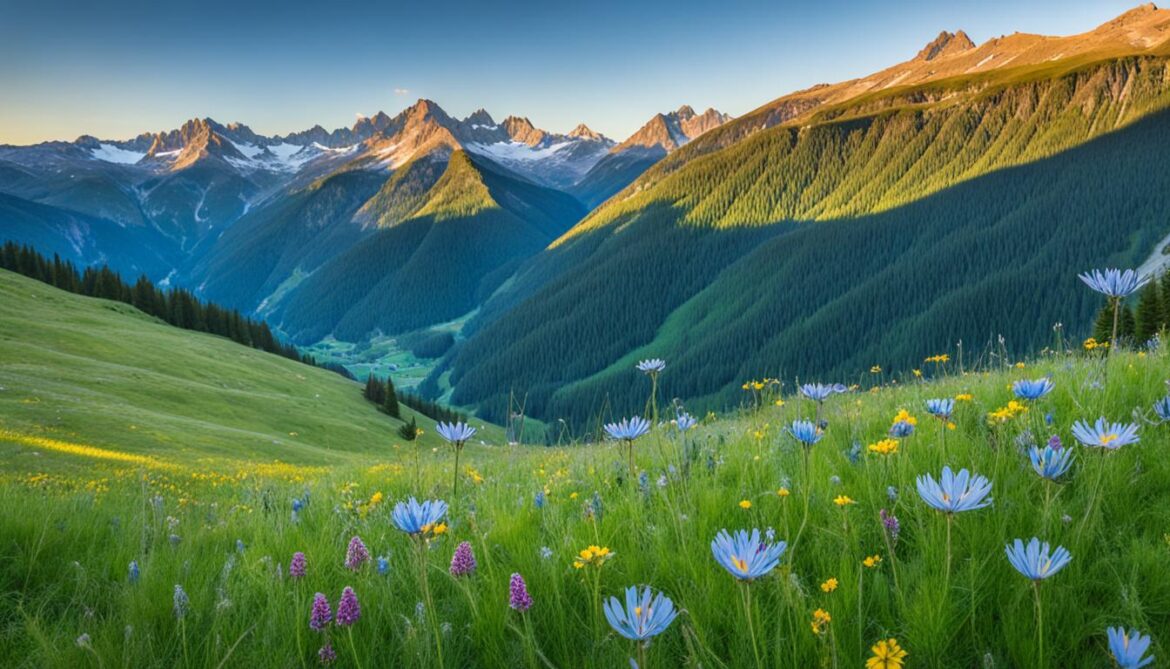
Biodiversity in the Ysyk-Köl Biosphere Reserve:
| Ecosystem | Key Features | Threatened Species |
|---|---|---|
| Alpine Meadows | Vibrant wildflowers, diverse plant and animal life | Snow leopard, Marco Polo sheep, bird species |
| Tundra | Subarctic landscape, harsh conditions | Arctic fox, ground squirrels, migratory birds |
| Riverine Ecosystems | Crucial resources for flora and fauna | Salmon species, beavers, waterfowl |
Eco-Tourism Opportunities in the Ysyk-Köl Biosphere Reserve
The Ysyk-Köl Biosphere Reserve in Kyrgyzstan offers visitors exceptional eco-tourism opportunities to immerse themselves in sustainable activities while experiencing the pristine beauty of the reserve. With a focus on sustainable tourism, nature-based activities such as hiking, birdwatching, and wildlife photography allow tourists to explore the diverse landscapes and observe the rich avian and mammalian fauna that thrive within the reserve.
One of the highlights of visiting the Ysyk-Köl Biosphere Reserve is the opportunity to embark on scenic hikes through its picturesque trails. Whether you are an avid hiker or simply enjoy being surrounded by nature, the reserve offers a range of hiking experiences for all levels of expertise. From gentle walks through alpine meadows to more challenging climbs to higher elevations, the hiking trails cater to a variety of preferences and fitness levels.
Birdwatching enthusiasts will be delighted by the abundance of bird species that call the Ysyk-Köl Biosphere Reserve home. The diverse range of habitats within the reserve provides a haven for both resident and migratory birds. From majestic raptors soaring through the skies to colorful songbirds perched amidst the foliage, birdwatchers can capture unforgettable moments and add to their life lists.
For wildlife photographers, the Ysyk-Köl Biosphere Reserve offers a treasure trove of subjects to capture. From elusive snow leopards and Ibex to wild horses grazing peacefully in the meadows, the reserve showcases an array of captivating wildlife. The breathtaking landscapes, combined with the opportunity to photograph these unique species in their natural habitats, present photographers with endless possibilities for stunning shots.
By engaging in eco-tourism activities within the Ysyk-Köl Biosphere Reserve, visitors not only create lasting memories but also contribute to the sustainability of the local communities. Sustainable tourism practices ensure that the economic benefits generated from tourism reach the local population, supporting their livelihoods and encouraging the preservation of this unique natural environment for future generations to enjoy.
“The Ysyk-Köl Biosphere Reserve offers a harmonious blend of opportunities for exploring nature, engaging with diverse wildlife, and supporting local communities through sustainable tourism.”

Conservation Challenges and Threats to the Ysyk-Köl Biosphere Reserve
The Ysyk-Köl Biosphere Reserve faces several conservation challenges and threats that put its delicate ecosystems and biodiversity at risk.
- Mining activities: Mining operations near the reserve present a significant risk to the surrounding ecosystems. These activities can lead to habitat destruction and the contamination of water sources, threatening the diverse flora and fauna of the reserve.
- Pollution: Inadequate wastewater treatment systems contribute to pollution within the reserve. The release of untreated waste can have detrimental effects on the water quality and overall health of the ecosystems.
- Poaching: The illegal hunting and trade of wildlife pose a severe threat to the biodiversity of the Ysyk-Köl Biosphere Reserve. Vulnerable and endangered species are particularly at risk, as poachers target them for their valuable parts or as exotic pets.
The conservation challenges faced by the Ysyk-Köl Biosphere Reserve require collaboration and concerted efforts from various stakeholders:
Collaboration: Government organizations, local communities, and non-governmental organizations (NGOs) must work together to address these challenges effectively. By pooling resources and expertise, collaboration can lead to more sustainable and impactful conservation strategies.
To tackle these conservation challenges, it is essential to:
- Enforce regulations and laws that protect the reserve and its biodiversity from harmful activities such as mining and poaching.
- Raise public awareness about the importance of conservation and the threats faced by the Ysyk-Köl Biosphere Reserve.
- Develop long-term conservation strategies that prioritize the protection and restoration of the reserve’s ecosystems.
Collaboration for Conservation
Effective collaboration is key to overcoming the conservation challenges facing the Ysyk-Köl Biosphere Reserve. By working together, stakeholders can secure the future of this valuable natural treasure, ensuring the preservation of its biodiversity for generations to come.
Conservation Challenges and Solutions
| Conservation Challenges | Solutions |
|---|---|
| Mining activities | Enforce strict regulations to minimize the environmental impact of mining near the reserve. |
| Pollution | Improve wastewater treatment systems to reduce pollution within the reserve. |
| Poaching | Enhance law enforcement efforts to combat illegal wildlife trade and protect vulnerable species. |
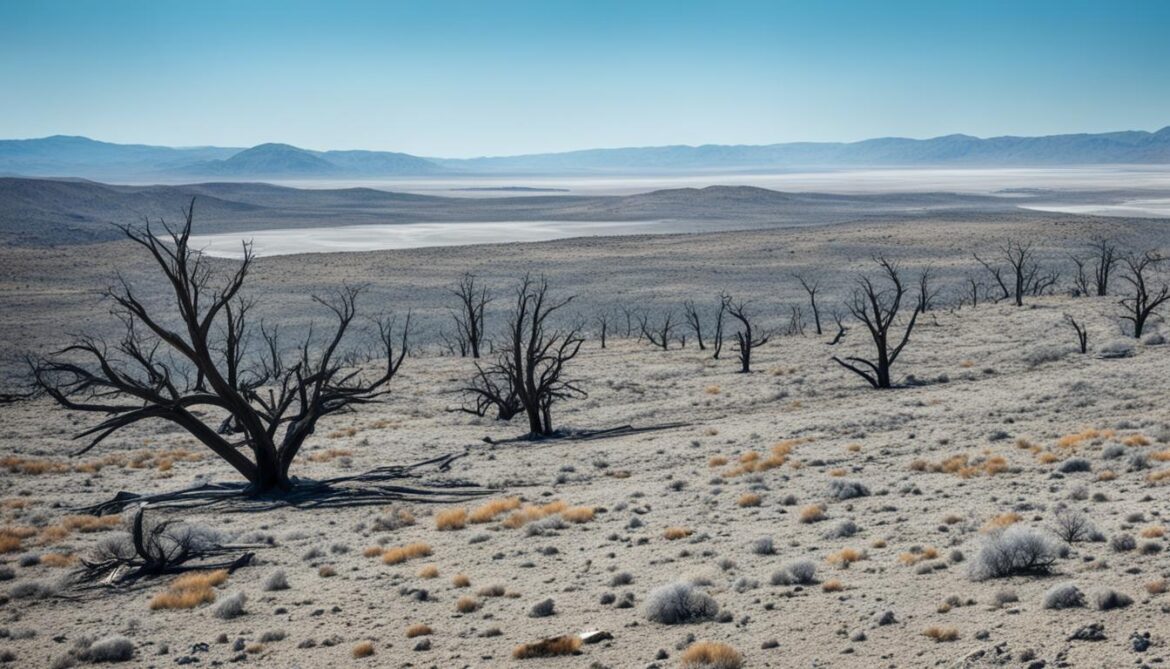
Collaborative Conservation Efforts for Sacred Natural Sites in Mexico
Mexico provides a rich context for collaborative conservation efforts aimed at protecting sacred natural sites. The recognition of the inherent sacredness of nature and the cultural significance attached to these sites has prompted Mexico to develop a policy framework to support their conservation. This commitment includes reevaluating protected areas to incorporate the perspectives of indigenous and traditional peoples.
The involvement of international policy processes and organizations, such as UNESCO, also contributes to the protection of Mexico’s sacred natural sites. These collaborative efforts create a platform for knowledge sharing and best practices in sacred site conservation. By embracing a collective approach, Mexico and its partners strive to safeguard the cultural and ecological value of these sites for future generations.
“Collaboration is vital in the conservation of sacred natural sites. It allows us to integrate traditional knowledge, scientific expertise, and policy frameworks, ensuring a holistic and sustainable approach to preservation.” – Dr. Ana Rodriguez, Conservation Biologist
However, several challenges persist in this meaningful endeavor. Mexico faces the need to establish appropriate laws specifically tailored to the protection of sacred natural sites. Additionally, low public awareness about the importance of these sites hampers conservation efforts. To overcome these challenges, capacity building initiatives are essential, equipping local communities and conservation organizations with the necessary knowledge and skills.
In light of these challenges, Mexico remains dedicated to collaborative conservation efforts for sacred natural sites. Through policy development, knowledge exchange, and capacity building, the country strives to ensure the long-term preservation of these invaluable cultural and ecological treasures.
Sacred Natural Sites Conservation Policy Context in Mexico
As Mexico recognizes the cultural and ecological significance of sacred natural sites, a comprehensive policy context is emerging to support their conservation. This policy development involves integrating indigenous and traditional peoples’ perspectives and knowledge into protected areas management plans.
Furthermore, international conventions and agreements provide a framework for sacred natural site conservation in Mexico. UNESCO’s Man and the Biosphere (MAB) program aims to reconcile human activity and biodiversity preservation, aligning closely with Mexico’s collaborative conservation efforts. Through MAB, Mexico’s sacred natural sites are recognized and protected within the global conservation agenda.
The Mexican government also acknowledges the importance of collaborative initiatives with local communities and Indigenous institutions to enhance the efficacy of conservation policies. By engaging stakeholders at all levels, Mexico aspires to strike a balance between ecological preservation and cultural respect, ensuring that sacred natural sites thrive as living cultural landscapes.
“The collaborative conservation of sacred natural sites in Mexico is a testament to the power of partnership. It represents a new era of intercultural dialogue and respect for indigenous knowledge, fostering harmony between humans and nature.” – Dr. Carmen Villa, Environmental Anthropologist
Capacity Building for Sacred Natural Site Conservation
Capacity building plays a crucial role in strengthening conservation efforts for sacred natural sites in Mexico. Recognizing the value of knowledge transfer, training programs and workshops are being implemented to equip local communities and conservation organizations with the necessary skills and expertise.
These capacity building initiatives focus on various aspects, including ecological monitoring, traditional ecological knowledge, sustainable resource management, and community engagement. By empowering individuals and organizations, Mexico strives to nurture a network of skilled practitioners who can effectively contribute to the long-term preservation of sacred natural sites.
Collaborative capacity building efforts involve sharing experiences and best practices with international partners. This exchange of knowledge fosters a global community dedicated to the conservation of sacred natural sites and promotes a diverse range of approaches tailored to each unique cultural and environmental context.
Collaborative Conservation in Action: Capacity Building Success Story
One inspiring example of collaborative capacity building in Mexico is the partnership between the local Mayan community of Tulum and the Tulum Monkey Sanctuary. This initiative aims to preserve the sacred natural site known as the “Cenote Sac Actun” while promoting sustainable eco-tourism.
The capacity building program offers training to local community members on wildlife conservation, sustainable land management, and responsible tourism practices. By equipping the community with knowledge and skills, this collaboration empowers them to actively participate in conservation efforts while improving their own socio-economic well-being.
Through this project, the Mayan community has become an integral part of the conservation strategy, actively protecting the Cenote Sac Actun and educating visitors about its cultural and ecological significance. This success story showcases the transformative power of collaborative conservation and capacity building, highlighting the potential for positive change when local communities are engaged as key stakeholders.
Collaborative Conservation Conclusion
Collaborative conservation efforts for sacred natural sites in Mexico are vital for safeguarding the cultural heritage and ecological value of these unique places. Mexico’s policy development, capacity building initiatives, and collaboration with international organizations demonstrate a commitment to preserving sacred natural sites for future generations.
However, ongoing challenges such as the need for appropriate laws, low public awareness, and capacity building gaps require continued attention and effort. By addressing these challenges collectively, Mexico and its partners can strengthen their collaborative conservation endeavors and ensure the long-term protection of sacred natural sites.
Through collaboration, policy context, and capacity building, Mexico pioneers a path towards sustainable preservation, honoring the sacredness of nature and the wisdom of indigenous and traditional communities.

Conclusion
The intertwining of Nicaragua’s sacred natural sites and biodiversity is a testament to the nation’s cultural heritage and natural splendours. The indigenous Mayangna people in Nicaragua deeply value their sacred sites, recognising the interconnectedness between humans and nature.
Conservation efforts in Nicaragua, as well as in Kyrgyzstan, demonstrate the importance of involving indigenous and traditional communities in biodiversity protection and sustainable eco-tourism. By preserving these sacred natural sites, not only is biodiversity safeguarded, but also the continuation of cultural practices and spiritual connections to the land.
Through collaborative conservation efforts and the recognition of the significance of cultural heritage, Nicaragua paves the way for a sustainable future. By protecting its sacred natural sites, the country ensures the conservation of its rich biodiversity for future generations to cherish and enjoy. This synergy between conservation, cultural preservation, and sustainable eco-tourism is a blueprint for other countries to follow in their pursuit of a harmonious relationship with nature.



